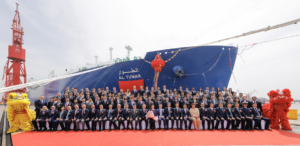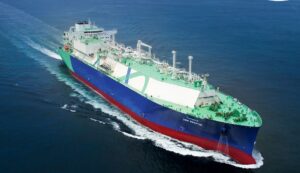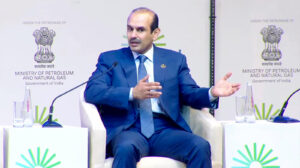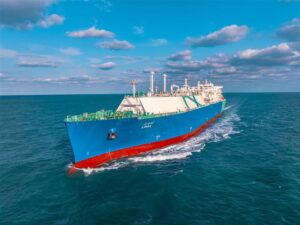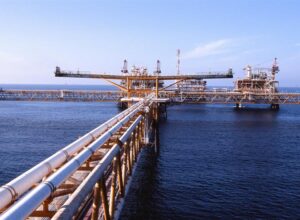Mega LNG fleet expansion rises to 104 vessels after QatarEnergy strikes deal with four shipowners
Qatar’s state-owned energy giant QatarEnergy has tucked another liquefied natural gas (LNG) fleet expansion milestone under its belt by entering into long-term time charter party (TCP) agreements with four international shipowners for the operation of 19 new, ultra-modern conventional-size LNG vessels, as part of the second phase of its giant shipbuilding program, which has now hit and surpassed the 100 mark, reaching 104 conventional LNG vessels.
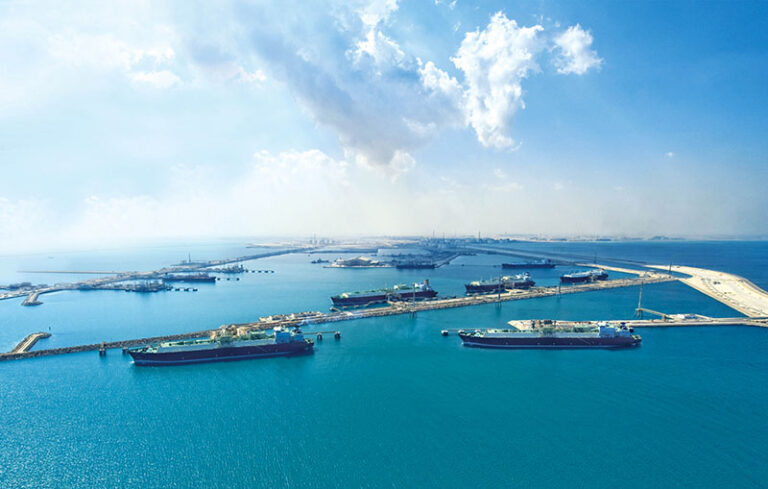
The Qatari heavyweight embarked on the first stage of its historic LNG shipbuilding program by ordering 60 ships at Korean and Chinese shipyards. The order, placed in September 2023, for the construction of 17 LNG carriers is said to mark the beginning of QatarEnergy’s second phase of the giant shipbuilding program. As part of this second phase of its huge LNG fleet expansion project, the Persian Gulf state’s LNG titan picked Qatar Gas Transport Company (Nakilat) to own and operate up to 25 conventional-size LNG carriers under the TCP agreements from March 2024.
The Qatari giant has now followed this with agreements for 19 more LNG ships, catering for the operation of six vessels by CMES LNG Carrier Investment, another six by Shandong Marine Energy (Singapore), and three by MISC. While these 15 LNG vessels are being constructed at Samsung Heavy Industries in South Korea, the remaining four vessels, which will be operated by a joint venture of Kawasaki Kisen Kaisha (K-Line) and Hyundai Glovis, are being built at Hanwha Ocean, formerly Daewoo Shipbuilding & Marine Engineering (DSME), also in South Korea.
Commenting on the boost to its LNG fleet program, Saad Sherida Al-Kaabi, Qatar’s Minister of State for Energy Affairs, President and CEO of QatarEnergy, highlighted: “Today’s signings form a significant milestone in QatarEnergy’s LNG fleet expansion program, as it marks the conclusion of the conventional sizes vessels portion of program, bringing the total number of ships for which we have signed TCPs to 104 vessels, a massive undertaking that is the largest shipbuilding and leasing program ever in the history of the industry.
“These ships will support our expanded LNG production capacity from the North Field in Qatar and Golden Pass in the U.S., while also meeting our long-term fleet replacement requirements. The careful shipowner selection process followed a detailed and rigorous global tender, signifying QatarEnergy’s commitment to expanding its fleet of modern LNG carriers in collaboration with world-class shipowners and in an open and transparent manner.”

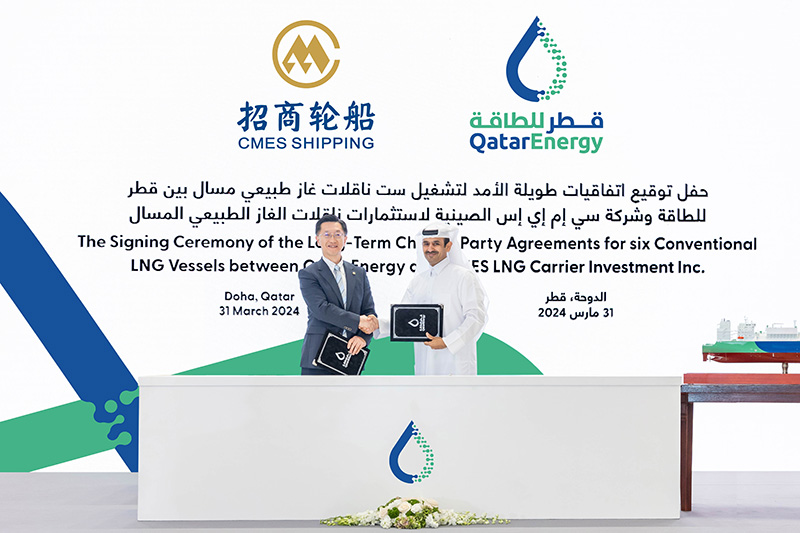

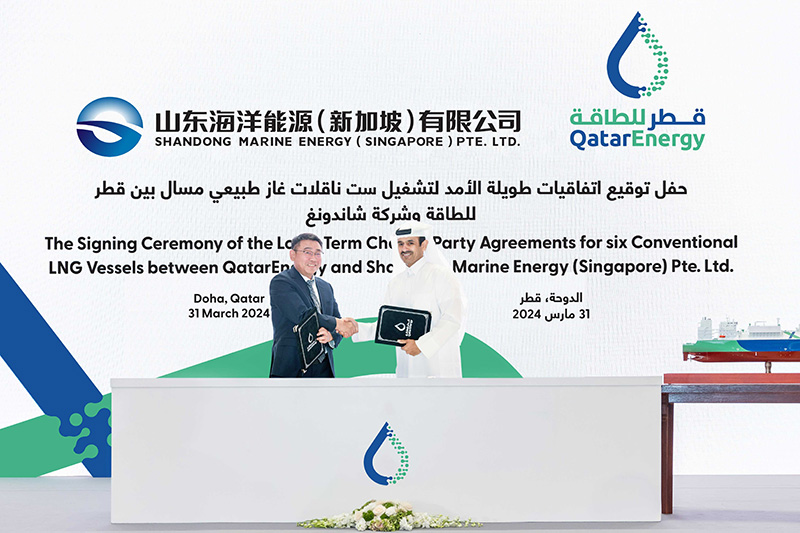
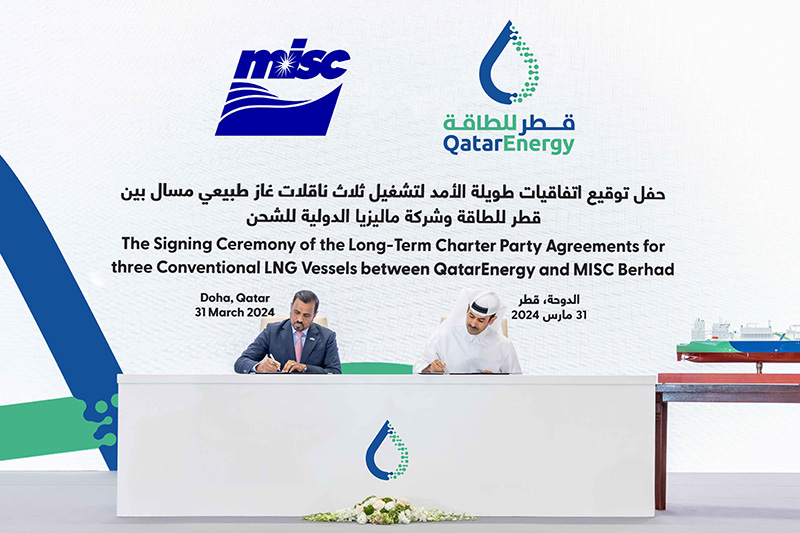

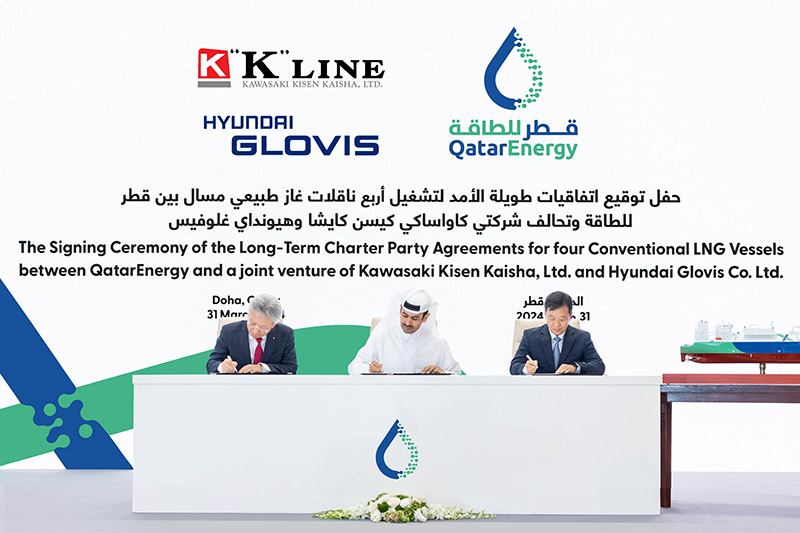
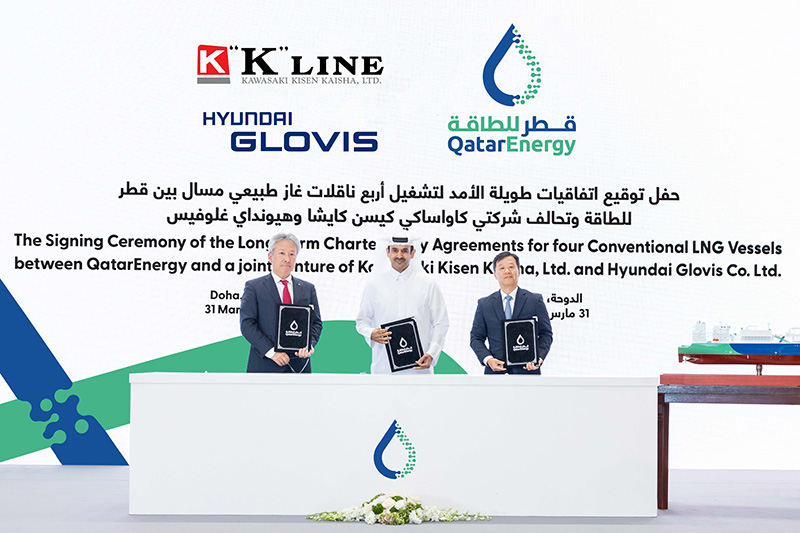
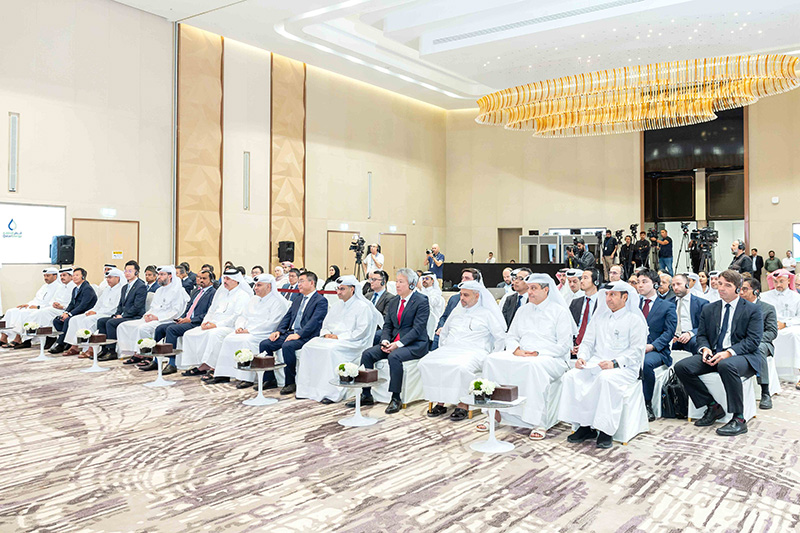
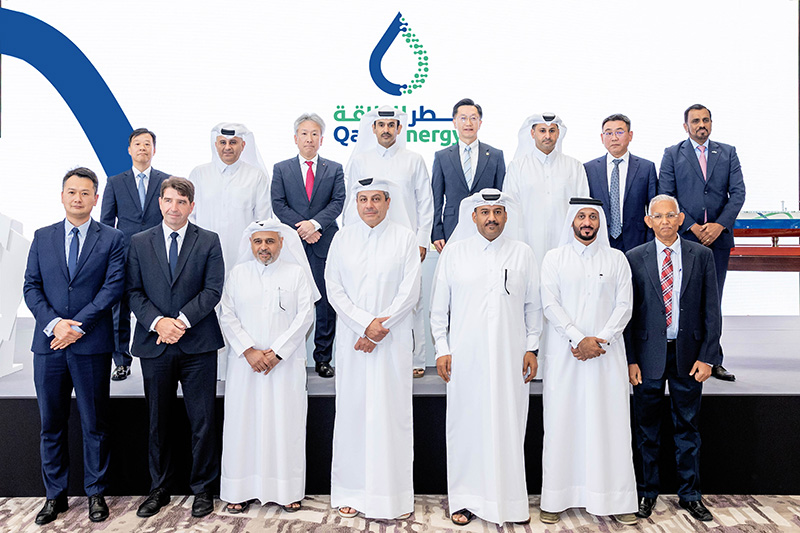
To bring the expansion of this LNG shipbuilding program to life, Al-Kaabi signed four separate sets of agreements at QatarEnergy’s headquarters in Doha on March 31 with Wang Yongxin, President & CEO of CMES LNG Carrier Investment; Li Maozhong, Chairman of Shandong Marine Energy; Satoshi Kanamori, Managing Executive Officer of K Line; Jungsuk Kim, Vice President of Hyundai Glovis; and Captain Rajalingam Subramaniam, President & CEO of MISC. The signing ceremony was attended by senior executives from QatarEnergy, QatarEnergy LNG, and the four shipowner companies.
Al-Kaabi emphasized: “We are very proud to strengthen our collaboration with these esteemed shipowners. And, we have full confidence that the 19 vessels will be operated with the latest and most advanced safety, technical and environmental standards. This is an important undertaking that will enable QatarEnergy to continue delivering cleaner energy to the world safely and reliably.”
These 104 conventional LNG vessels are expected to support QatarEnergy’s aims to expand LNG production capacity from the North Field LNG expansion and Golden Pass LNG export projects while meeting its long-term fleet replacement requirements. K-Line claims that the vessels will be equipped with X-DF2.2 iCER, VCR, and other energy-saving devices, contributing to GHG emissions reduction and realizing the ease of environmental impact by lower fuel consumption in operation.
Aside from this, the new vessels are expected to obtain OCCS-Ready notation from the classification society by evaluating the future installation of the OCCS, in anticipation of further GHG reduction. As 43 out of the 104 ships will be chartered by QatarEnergy’s affiliate QatarEnergy Trading, the Qatari player claims that this marks “the single largest one-step ship acquisition program of any single entity in the history of the LNG industry,” placing the company and its subsidiary firmly on the road to becoming “a leading global LNG trader.”
With a capacity of 174,000 cubic meters each, the 19 vessel additions to the firm’s LNG fleet expansion program will be equipped with the latest LNG shipping technologies, embodying QatarEnergy’s ongoing endeavors to achieve optimal fuel efficiency and slash carbon emissions.
The Qatari giant has put the wheels into motion to bolster its gas reserves and add another expansion project to its arsenal at the North Field, thus, the North Field East (NFE) and the North Field South (NFS) undertakings will be joined by the North Field West (NFW) project, which is anticipated to ramp up the country’s LNG production capacity by nearly 85% from current production levels by 2030.
Related Article
-
New gas expansion project to magnify Qatar’s LNG production by nearly 85%
Exploration & Production
QatarEnergy is also determined to scale up its oil production ante at Qatar’s largest offshore oil field by about 100,000 barrels per day. To turn its plans into reality, the company recently handed out four multi-billion-dollar engineering, procurement, construction, and installation (EPCI) contract packages to multiple players, including McDermott, HD Hyundai Heavy Industries, Larsen & Toubro, and China Offshore Oil Engineering (COOEC).
Al-Kaabi is convinced that employing a balancing act between energy security, affordability, and sustainability will enable countries around the globe to propel the energy transition journey forward.

ADVERTISE ON OFFSHORE ENERGY
𝐃𝐨 𝐲𝐨𝐮 𝐰𝐚𝐧𝐭 𝐭𝐨 𝐠𝐫𝐚𝐛 𝐭𝐡𝐞 𝐚𝐭𝐭𝐞𝐧𝐭𝐢𝐨𝐧 𝐨𝐟 𝐲𝐨𝐮𝐫 𝐭𝐚𝐫𝐠𝐞𝐭 𝐚𝐮𝐝𝐢𝐞𝐧𝐜𝐞 𝐢𝐧 𝐨𝐧𝐞 𝐦𝐨𝐯𝐞? 𝐋𝐨𝐨𝐤 𝐧𝐨 𝐟𝐮𝐫𝐭𝐡𝐞𝐫 𝐭𝐡𝐚𝐧 𝐎𝐟𝐟𝐬𝐡𝐨𝐫𝐞 𝐄𝐧𝐞𝐫𝐠𝐲! 𝐎𝐮𝐫 𝐜𝐨𝐧𝐭𝐞𝐧𝐭 𝐢𝐬 𝐫𝐞𝐚𝐝 𝐛𝐲 𝐭𝐡𝐨𝐮𝐬𝐚𝐧𝐝𝐬 𝐨𝐟 𝐩𝐫𝐨𝐟𝐞𝐬𝐬𝐢𝐨𝐧𝐚𝐥𝐬 𝐞𝐧𝐠𝐚𝐠𝐞𝐝 𝐢𝐧 𝐨𝐢𝐥 & 𝐠𝐚𝐬, 𝐦𝐚𝐫𝐢𝐭𝐢𝐦𝐞, 𝐨𝐟𝐟𝐬𝐡𝐨𝐫𝐞 𝐰𝐢𝐧𝐝, 𝐠𝐫𝐞𝐞𝐧 𝐦𝐚𝐫𝐢𝐧𝐞, 𝐡𝐲𝐝𝐫𝐨𝐠𝐞𝐧, 𝐬𝐮𝐛𝐬𝐞𝐚, 𝐦𝐚𝐫𝐢𝐧𝐞 𝐞𝐧𝐞𝐫𝐠𝐲, 𝐚𝐥𝐭𝐞𝐫𝐧𝐚𝐭𝐢𝐯𝐞 𝐟𝐮𝐞𝐥𝐬, 𝐬𝐡𝐢𝐩𝐩𝐢𝐧𝐠, 𝐚𝐧𝐝 𝐨𝐭𝐡𝐞𝐫 𝐢𝐧𝐝𝐮𝐬𝐭𝐫𝐢𝐞𝐬 𝐨𝐧 𝐚 𝐝𝐚𝐢𝐥𝐲 𝐛𝐚𝐬𝐢𝐬.
Follow Offshore Energy’s Fossil Energy market on social media channels:

